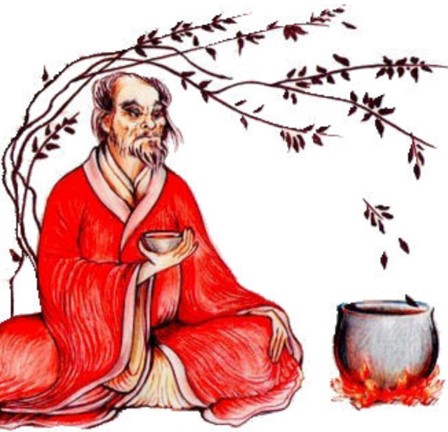Week 22: Sweet Summer
It’s time to celebrate something celestial, revolutionary, and simply good.
Let’s start at the beginning. Camellia sinensis first came down to us humans from high above. Originally found growing on the slopes of the Himalayas, it was brought into China as a medicinal herb about 5000 years ago. Legend has it that the emperor Shen Nung was the first to realize its most potent property, when he placed some of the leaves into a pot of boiling water. The result was a delicious brew that was safer to drink than pure water, and which sharpened the mind while providing a calming break.
When the Portuguese reached the Celestial Empire in 1557, they took a liking to the stuff and brought some of the fresh, green leaves home to Europe. But it didn’t travel well, so not long after that, the Dutch opted to buy the “black” version of the leaves – dried and oxidized leaves pressed into a handy brick – which the Chinese were happy to sell, since it was lower quality. But, no matter, the Europeans loved it, and it was such a sensation that within a century or two, these bricks became a kind of hard international currency among the various European nations that were busy pillaging the world.
The Dutch imported so much of the stuff that it became one of the primary commodities of the world’s first publicly-traded company, which was wildly profitable for over 250 years. (The longer story of which I’ve re-posted at the ‘Forty-Something’ website, which you can read here. You’re welcome.)
But it was the English who unleashed the true power of the drink, when it replaced beer as the standard mid-afternoon break for the working class. It became such a central part of the English culture that when London attempted to tax sales of it in the New World, in 1773, American colonists rebelled and dumped several tons of it into Boston Harbor. Which in turn led to a new nation and the ultimate creation of the most important republic in the history of the world.
South Carolina was the first American state to grow the stuff, but at first consumption was limited during the oppressive heat of summer. In 1879, a publication called Housekeeping in Old Virginia suggested a cold version of the drink, made with a simple sugar syrup, poured over ice. But ice was not widely available until the invention of refrigeration. When that was introduced at the 1904 World’s Fair, suddenly all the celestial stars had aligned, and the stuff was now widely available to everyone, at any time, and the drink exploded into the national consciousness.
And so we come to June, summer has officially begun. It’s time for something simple, sweet, and pretty darn good.
Ladies and Gentlemen, welcome to National Sweet Tea Month.
Care for a lemon wedge? Sprig of mint?
